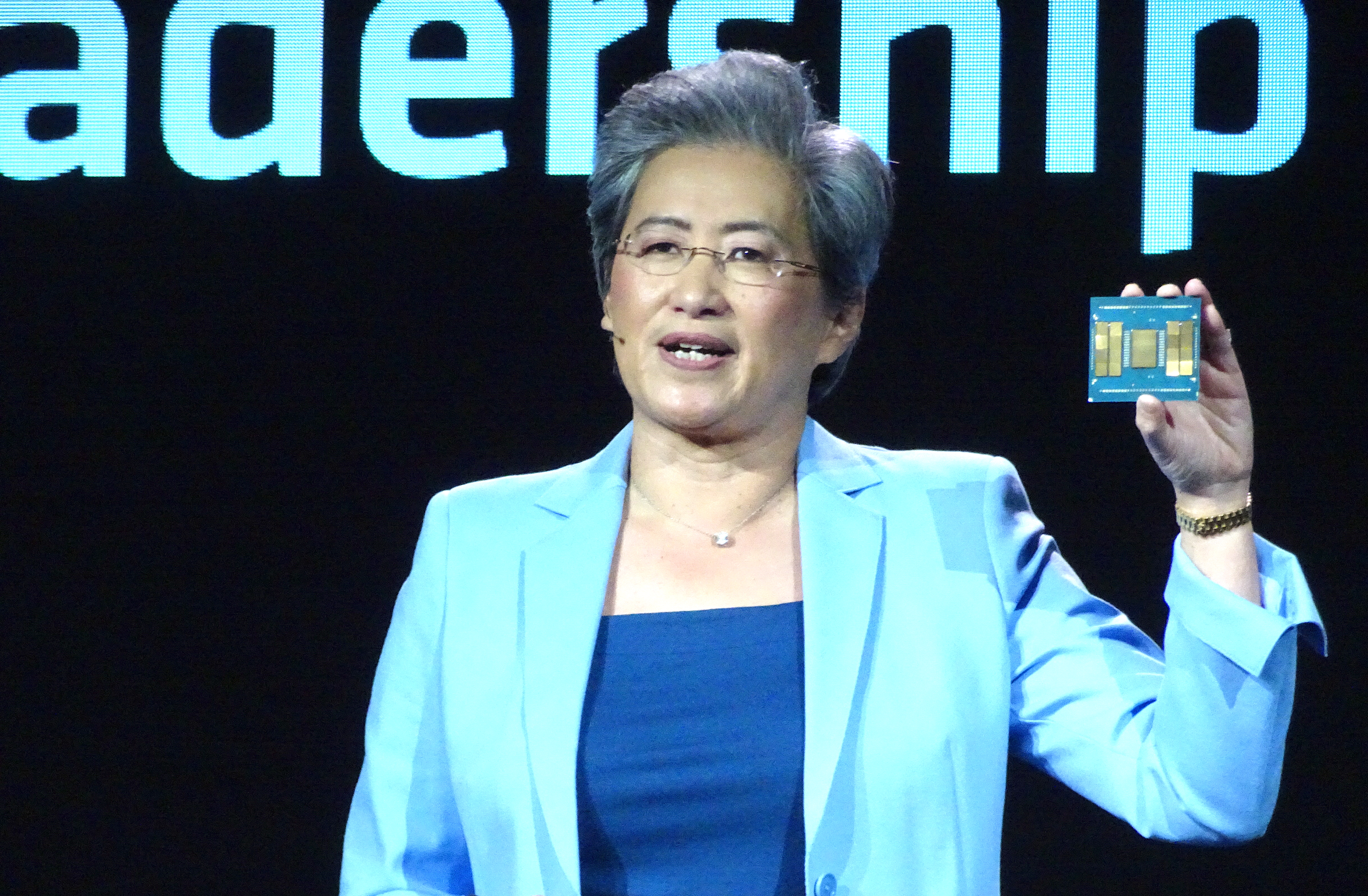 INFRA
INFRA
 INFRA
INFRA
 INFRA
INFRA
Advanced Micro Devices Inc. delivered sharp increases in both profit and revenue today as it pushed deeper into the artificial intelligence data center market, but its stock headed lower in late trading after its profit margin guidance disappointed investors.
The chipmaker reported third-quarter earnings before certain costs such as stock compensation of $1.20 per share, edging past the $1.16 analyst target. Revenue for the period jumped 36%, to $9.25 billion, surging past the Street’s consensus estimate of $8.74 billion. All told, the company posted a net profit of $1.24 billion in the quarter, up from a profit of just $771 million one year ago.
In terms of guidance, AMD said it’s looking for fourth-quarter revenue of around $9.6 billion at the midpoint of its forecast range, implying growth of about 25%. That’s quite a bit higher than the Street’s target of $9.15 billion. However, investors were disappointed to see AMD’s forecast for adjusted gross margin, which came to just 54.5%, in line with Wall Street’s consensus.
AMD Chair and Chief Executive Lisa Su (pictured) hailed the company’s latest results as “outstanding,” noting it delivered record-breaking revenue and profitability. She said the numbers reflect broad-based demand for the company’s high-performance EPYC and Ryzen processors and growing interest in its Instinct AI accelerators. She added that the results mark “a clear step in our growth trajectory as our expanding compute franchise and rapidly scaling data center AI business drive significant revenue and earnings growth.”
Notably, AMD said its guidance for the current quarter does not include anticipated revenue from shipments of its Instinct MI308 processors to China, similar to the previous quarter when they were also excluded. The reason is that, although the U.S. government has approved waivers that allow it to ship MI308 to Chinese customers, it’s waiting on the Department of Commerce to review its license applications, and can’t be sure when they’ll be accepted.
If AMD is able to clear its shipments to China, that could boost its revenue substantially and perhaps also move the needle on its margins. But it seems investors don’t like uncertainty, so the company’s stock fell 3% in extended trading today. That followed a decline of nearly 4% in the regular trading session. Despite this, the company’s stock is still up 107% in the year to date, compared with a gain of 21% for the broader Nasdaq index.
AMD’s stock has surged this year because the company is drafting in the success of Nvidia Corp. in the market for graphics processing units, and AI companies have an insatiable appetite for GPUs to power their AI workloads. For years, the biggest players in AI, such as OpenAI Group PBC, were almost exclusively reliant on Nvidia’s GPUs, but that has changed with the arrival of AMD’s Instinct processors.
The company has made some significant announcements regarding the growing adoption of its chips. Last month, Oracle Corp. announced plans to deploy 50,000 new AMD Instinct MI450 AI processors in its cloud, starting next year. The MI450 is AMD’s most advanced GPU, set to launch early next year.
Also last month, AMD said OpenAI is planning to deploy 6 gigawatts of its Instinct processors over multiple years, and across multiple generations of hardware, starting with an initial deployment of about 1 gigawatt. As part of that deal, OpenAI is also considering taking a 10% stake in the chipmaker, having been given the option to purchase 160 million shares.
AMD’s data center unit, which includes its AI accelerators and also standard EPYC central processing units, delivered $4.34 billion in revenue during the quarter, up 22% from a year earlier and above the Street’s $4.13 billion forecast. Still, investors had been looking for greater profitability, and although the unit delivered record revenue, its operating income of $1.07 billion trailed the Street’s forecast by about 14%. That’s because data center margins dropped to 25%, from 29% one year ago.
AMD’s growing traction was noted by D.A. Davidson analyst Gil Luria, who told the Wall Street Journal that he sees a potential inflection point for the chipmaker. “It depends on their executing on the operations side going forward and releasing a chip that performs at scale with high yields and high performance,” he said. “If it does that, the sales are there waiting. There’s significant demand out there for an Nvidia alternative.”
Although investors are laser-focused on AMD’s AI business, it was the client computing business that really stood out during the quarter, said Holger Mueller of Constellation Research. The analyst told SiliconANGLE that much of the growth was driven by sales of the company’s new Ryzen chips, which are powering a new generation of personal computers and laptops.
“While the data center business grew, it was not nearly as impressive as the client business, which is now providing most of the company’s momentum,” Mueller said. “The data center unit is still bigger, but a strong holiday quarter could yet see the client business regain parity. However, we must also wait and see what kind of impact AMD’s new partnerships have on its biggest segment.”
Revenue from the client computing business came to $2.75 billion, up 46% and twice as fast of the data center unit. It was well ahead of the Street’s forecast of $2.61 billion, too. Gaming revenue totaled $1.3 billion, up even more at 181% from a year earlier and above the consensus estimate of $1.05 billion.
Support our mission to keep content open and free by engaging with theCUBE community. Join theCUBE’s Alumni Trust Network, where technology leaders connect, share intelligence and create opportunities.
Founded by tech visionaries John Furrier and Dave Vellante, SiliconANGLE Media has built a dynamic ecosystem of industry-leading digital media brands that reach 15+ million elite tech professionals. Our new proprietary theCUBE AI Video Cloud is breaking ground in audience interaction, leveraging theCUBEai.com neural network to help technology companies make data-driven decisions and stay at the forefront of industry conversations.